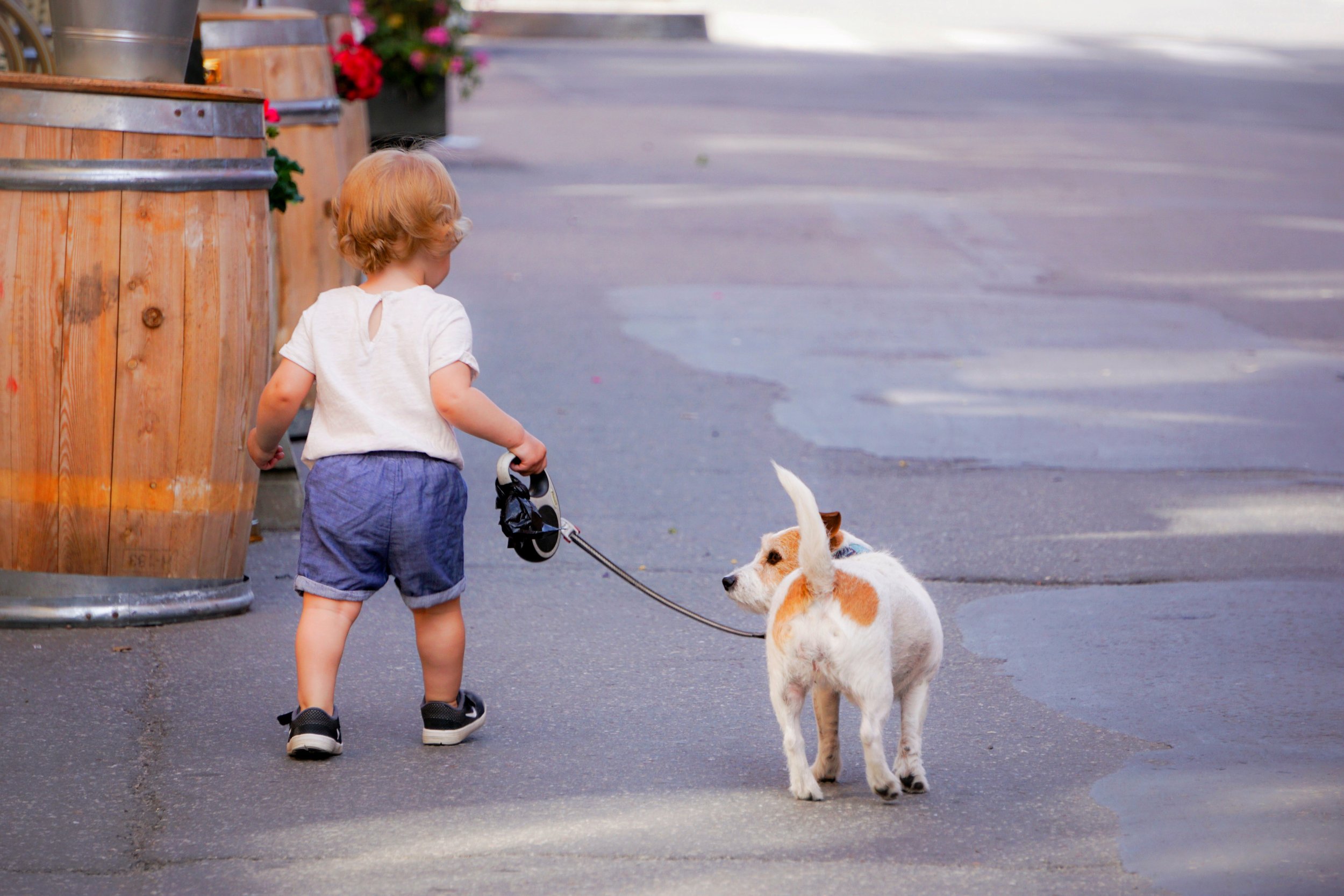Preventing Dog Walking Injuries
Photo by Robert Eklund on Unsplash
Walking your dog is a great way to stay active and bond with your furry friend, but can occasionally cause musculoskeletal injuries. Injuries typically occur when a dog pulls on the leash suddenly, crushing the person’s hand or causing them to trip or lose balance.
Hand and Finger Fractures: Hand and finger fractures are the most common dog walking injury we see at Urgently Ortho. They occur when the leash is wrapped tightly around the person’s hand or fingers. A sudden jerk when the dog pulls causes crushing. This can result in fractures of the phalanges, metacarpals, or carpal bones. Symptoms of a hand or finger fracture include pain, swelling, and difficulty moving the affected finger or hand.
Sprains and Strains: Sprains occur when a ligament is stretched or torn, while strains are the result of a muscle or tendon injury. Both can be caused by a sudden pull from the leash which might tug on the person’s arm or cause them to twist their ankle. Symptoms include pain, swelling, and difficulty moving the affected joint.
Fractures from Falling: Pulling can sometimes cause a person to fall, and falls can cause fractures of the wrist, elbow, or hip, especially in older adults. A common fracture that we see is a distal radius fracture. This is usually from the leash pulling one hand and then the person falls and lands on their other hand, fracturing their wrist. This type of injury is sometimes known as FOOSH or falling on out-stretched hand.
Back Pain: Walking a dog can sometimes exacerbate back pain, especially with a pre-existing back condition. Symptoms of back pain include muscle spasms, stiffness, and limited mobility. To prevent back pain, it's helpful to maintain good posture while walking your dog and wear appropriate footwear with good cushioning.
How to Hold a Leash Properly to Avoid Finger/Hand Crushing Injuries
Use a sturdy leash that is appropriate for the size and strength of your dog.
Hold the leash with a relaxed but firm grip, keeping your fingers and thumb together.
Avoid wrapping the leash around your hand or fingers, as this can cause crushing injuries.
Use a harness instead of a collar to reduce the force of pulling on the leash.
Train your dog to walk calmly on a leash, so you don't have to worry about sudden pulls and jerks.
If you live in San Francisco and want to train your dog to walk calmly on a leash, there are several resources available to help you. Here are a few options to consider:
San Francisco SPCA: The San Francisco SPCA offers dog training classes, including classes specifically focused on leash manners and loose-leash walking. Their classes are taught by experienced trainers and are designed to help you and your dog build a strong, positive relationship.
Citizen Hound: Citizen Hound is a San Francisco-based dog training company that offers group and private training sessions. Their trainers use positive reinforcement techniques to help your dog learn to walk calmly on a leash and follow basic commands.
Meetup Groups: There are several dog-walking meetup groups in San Francisco that can be a great resource for learning how to walk your dog safely and calmly. These groups are typically free to join and are a great way to connect with other dog owners in the community.
Photo by leonides ruvalcabar on Unsplash
Walking your dog is not only beneficial for your dog, but it can also have positive effects on your own health. First and foremost, walking your dog provides exercise for both you and your pet. Regular exercise can improve cardiovascular health, reduce the risk of chronic diseases like diabetes and heart disease, and lead to improved sleep quality and quantity.
Taking your dog for a walk can help relieve stress and improve your mood. Spending time outdoors and getting fresh air can reduce anxiety and depression, and bonding with your dog can improve your overall sense of well-being. It can also be a great way to meet new people and connect with other dog owners in your neighborhood.



